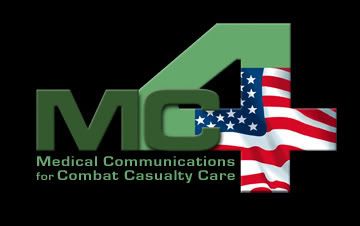 The Soldiers at the aid station and Company level used MC4 handhelds to document sick call and saved the encounters to Soldiers’ individual Personal Information Carriers (PICs).
The Soldiers at the aid station and Company level used MC4 handhelds to document sick call and saved the encounters to Soldiers’ individual Personal Information Carriers (PICs).The PIC didn’t always work well because of space limitations and terminals often corroded. Also, because we didn’t have solid communications connectivity dedicated for Medical Ops, when we docked our handhelds to our MC4 laptops the information flow stopped there. It wasn’t until we returned home 12 months later that the data was pulled off of the MC4 laptops and added into the Central Data Repository (CDR).
As a fail safe, we kept paper records. While deployed, we had Soldiers attached to our Infantry Battalion from the Brigade Support Battalion. As redeployment grew closer, the Support Medical Company asked that any records we had for the attached Soldiers be handed back over to the Support Medical Company for redeployment. Of course we complied with the request and handed the records over to the Support Medical Company in typical controlled fashion. However, once everything was unpacked back at home the records were nowhere to be found.
One of the Soldiers we had treated for back injuries in Iraq had no documentation to share with his doctor to continue treatment because his records were lost. Fortunately, by working with the Fort Lewis MC4 Site Lead (Mr. M.D. Mandeville) and everyone’s favorite MC4 Systems Administrator (Mr. Cody Smith) we were able to retrieve his encounters that had been saved to the Soldiers PIC.
While we had a gallon size bag of these PICs that didn’t work, in this instance the PIC did work and proved essential. It’s not a proof of longevity for the PIC device, but it helped the Soldier get access to medical benefits at the VA upon his ETS.
Another problem that I encountered was keeping my veteran medics and new medics interested in using the MC4 system during training. I attributed this to the lack of interoperability of the system when in a garrison environment.
 After we returned home, I had such a hard time getting my Soldiers to willingly training with our MC4 systems because we could not use the MC4 laptops LAN in our Battalion Aid Station (BAS), which was provided by Madigan Army Medical Center. But my Platoon Sergeant (SFC Douglas D. Wallace) and I pushed hard tbuy into theo get it approved for use on the network.
After we returned home, I had such a hard time getting my Soldiers to willingly training with our MC4 systems because we could not use the MC4 laptops LAN in our Battalion Aid Station (BAS), which was provided by Madigan Army Medical Center. But my Platoon Sergeant (SFC Douglas D. Wallace) and I pushed hard tbuy into theo get it approved for use on the network.Once connectivity was approved and the drops were installed, my Soldiers almost instantly took ownership of the systems and felt more comfortable with the laptops and were much more willing to train with the handheld devices as well. No longer did they see it as just a “dumb box” to dump info from the field into. No, it was also useful to them in garrison as well.
In my opinion, if you want MC4 to really take off, the system should be approved for use in Garrison BAS’s and configured so there’s a seamless transition from field to garrison and back. That way, if you go to a three-week field exercise you’re using the same hardware system being used in theater. It’s only logical that we “train as we fight” and practice using the same system we’re equipped with when we’re deployed. There also needs to be a standalone means of establishing connectivity for medical ops and info that is part of the Medical Platoon’s Modified Task Organization and Equipment (MTO&E).

No comments:
Post a Comment